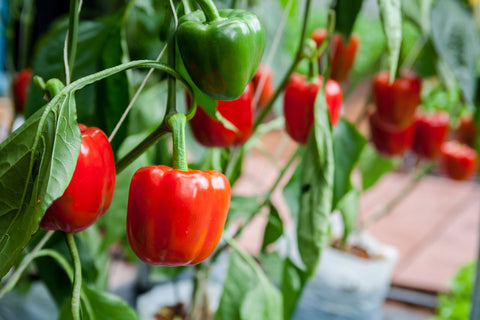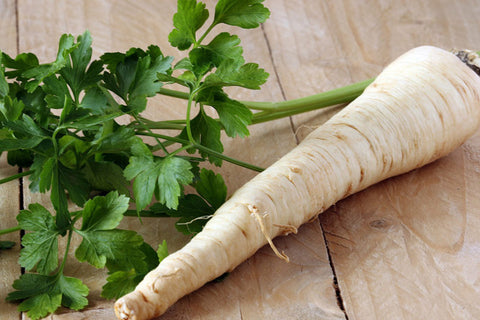Apples are one of the most beloved and widely cultivated fruits, known for their crisp texture, juicy flesh, and sweet-tart flavor. Whether enjoyed fresh off the tree, baked into pies, or pressed into cider, apples are a versatile and delicious addition to any kitchen. In this guide, we'll explore the fascinating world of apple cultivation, from planting and tending to harvesting and storing, to ensure you enjoy a bounty of perfectly ripe apples all season long.

The Allure of Apples
Apples have a rich history dating back thousands of years, with origins in the mountains of Central Asia. Over time, they have been selectively bred and cultivated into hundreds of varieties, each with its unique flavor, texture, and appearance. From classic varieties like Granny Smith and Fuji to heirloom favorites like Honeycrisp and Golden Delicious, there's an apple variety to suit every taste and culinary preference.
Nutritional Benefits
Apples are not only delicious but also packed with essential nutrients that support overall health and well-being. They are rich in dietary fiber, vitamin C, potassium, and antioxidants, which can help reduce the risk of chronic diseases, promote digestive health, and support immune function. Incorporating apples into your diet can contribute to a balanced and nutritious eating plan, providing a delicious way to boost your intake of vitamins and minerals.

Growing Apples
- Variety Selection: Choose apple varieties that are well-suited to your climate and growing conditions. Consider factors such as chill hours (the number of hours below 45°F required for fruit set), disease resistance, and pollination requirements when selecting apple trees for your orchard.
- Site Selection: Plant apple trees in a sunny location with well-drained soil. Avoid planting in low-lying areas prone to frost pockets or areas with poor air circulation, as these conditions can increase the risk of disease and reduce fruit quality.
- Planting: Plant apple trees in late winter or early spring when the soil is moist and workable. Dig a hole slightly larger than the tree's root ball and backfill it with soil, making sure the graft union is above the soil line. Space trees according to their mature size, are typically 15-20 feet apart.
- Pruning and Training: Prune apple trees annually to maintain an open center and promote good air circulation and sunlight penetration. Remove dead, damaged, or diseased branches, as well as any crossing or overcrowded growth. Train young trees to a central leader or modified central leader system to encourage strong, balanced growth.
- Watering and Fertilizing: Keep apple trees well-watered, especially during periods of drought or hot weather. Provide approximately 1-2 inches of water per week, ensuring the soil remains consistently moist but not waterlogged. Fertilize trees in early spring with a balanced fertilizer to support healthy growth and fruit production.

Harvesting
Knowing when to harvest apples is crucial for ensuring optimal flavor, texture, and storability. Here are some tips for picking apples at peak ripeness:
- Color: Look for apples with vibrant coloration and a uniform appearance. Different apple varieties ripen to different colors, so familiarize yourself with the typical ripeness indicators for the varieties you're growing.
- Texture: Gently squeeze the apple to assess its firmness. Ripe apples should yield slightly to pressure but still feel firm and crisp. Avoid apples that are overly soft or mushy, as they may be overripe or starting to decay.
- Flavor: Taste-test a few apples from different parts of the tree to gauge their flavor. Ripe apples should be sweet, with a balanced acidity and complex flavor profile. If the apple tastes underripe or overly tart, it may need more time on the tree to mature fully.
- Stem Test: Check the stem of the apple for signs of maturity. Ripe apples will detach easily from the tree with a gentle twist or tug. If the stem remains firmly attached, the apple may not be fully ripe and should be left on the tree for a few more days.

Storing
Once harvested, store apples properly to maintain their quality and flavor. Here are some tips for storing apples:
- Cool, Humid Environment: Store apples in a cool, humid location such as a root cellar, basement, or refrigerator crisper drawer. Apples should be kept at temperatures between 32°F and 40°F to slow ripening and prevent spoilage.
- Ventilation: Provide good air circulation around stored apples to prevent moisture buildup and reduce the risk of mold and decay. Avoid storing apples in plastic bags or airtight containers, as this can trap moisture and accelerate spoilage.
- Check for Spoilage: Regularly inspect stored apples for signs of spoilage, including mold, soft spots, or wrinkled skin. Remove any damaged or rotten apples immediately to prevent the spread of decay to the remaining fruit.
Conclusion
Growing, harvesting, and storing apples requires careful attention to detail and a deep understanding of the fruit's unique characteristics and requirements. By following these essential tips for cultivating and caring for apple trees, you can enjoy a bountiful harvest of flavorful, nutritious fruit year after year. So roll up your sleeves, dig in the dirt, and get ready to savor the sweet rewards of growing and enjoying your homegrown apples.









